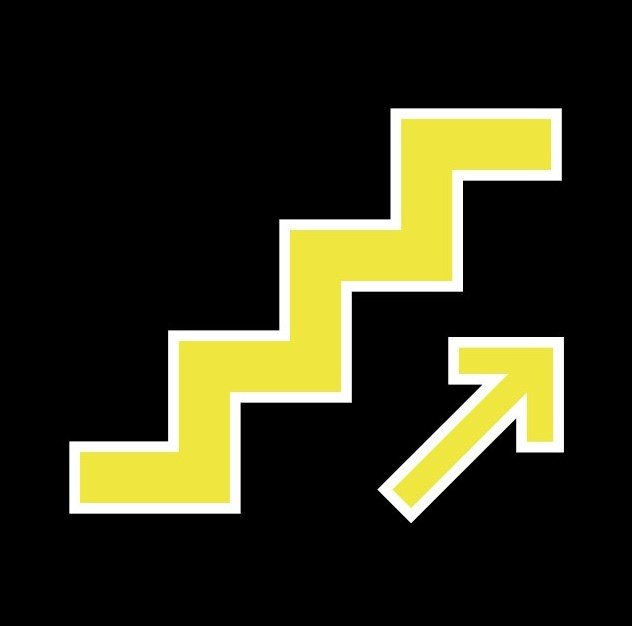
the research
The bio.t™ METHOD playbook is based on a process Melissa has refined over the years as a regenerative business transformation specialist. Over lock downs she took it one step further.
Melissa went deep into research, analyzing and curating 100 years of Nature’s living-system thinking. She then calibrated this with a disruptive business design lens, and wove the pieces into a framework for re/designing strategy, innovation and business models.
1.
NATURE’S RE/DESIGN THINKING
regenerative Research
Looking back over the last 100 years, across 20+ different schools of thought, Melissa first analysed deep patterns of Nature’s living systems thinking- ecology, biology and social relational ethics. She then weaved in agricultural, soil and permaculture regenerative design principles. Finally she cross-referenced and calibrated with regenerative business, engineering, economic and chemistry principles.
At each step she chased patterns and dissected assumptions, based on the underlying relationships, to pull through value drivers that could be applied to business model innovation, and the strategic transformation process.
1.1 PATTERN ANALYSIS
Theme reoccurrence within and across all thinking schools. What’s same, what’s different. Why?
1.2 RELATIONSHIPS
Interdependencies. Cause and effect. Causal Loops. Hierarchy and scale. Outcome and drivers. INSIGHT | fitness (fittedness) from strength of relationship
1.3 RELATIONAL LENS + DIMENSIONS
Relationship to time, place, self, others, materiality, structural form, process, energy, information. INSIGHT | role of ethics
1.4 FOUR VALUE AXES
Calibrated with a lens of value / value risk / value potential. INSIGHT | not one, but four axes of value, all working together interdependently.
-
Living Systems principles. Living Systems Thinking, Miller 1978. Ecological Succession, Allenby + Cooper 1994. Life’s Biology Patterns, Hoagland 1995. Life’s Principles, Benyus and Baumeister 1997. Living systems Adaptive Cycle, Holling 2002.
Regenerative land principles. Bio Dynamic Farming, Steiner 1924. Permaculture, Mollison + Holmgren 1978. Regenerative Agriculture Rodale Institute 1980s.
Regenerative systems. Systems Thinking and levers of systems disruption, Meadows 1980s.
Regenerative Business and economics. Regenerative business Sanford 1990s, Elkington 1990s, Mackey 2000s. Regenerative business redesign, Reed 2000s, Gunter 2010s, Stuchtey, Enkvist and Zumwinkel 2010s. Regenerative economics Scumacher 1970s, Raworth, Fullerton and Mazzucato 2010s.
Circular and green business systems. Circular Economy, Stahel 1980s McCarthur 2010s. Cradle to Cradle, Braungart + McDonough 2002. Green Chemistry, Anastas + Warner 1998. Green Engineering, Anastas + Zimmerman 2003.
—-
Ethical Principles Nature’s living systems principles were then cross-referenced with ethical principles with respect to relationship - to self and others - (businesses, markets and industries are social systems). Pulling from Eastern philosophy (Hinduism. Taoism. Buddhism. Theosophy) Indigenous philosophies of the Pacific rim (as documented). and then rooted in te ao Māori.
2.
BUSINESS RE/DESIGN THINKING
disruptive transformation
Looking back over the last 50 years, across 15 different schools of thought, Melissa then applied Nature’s regenerative living systems principles to the process of business re/design. She first applied a design thinking lens for business transformation - value potential, lifetime value and net present value. She then pulled the key pieces into systems design thinking principles. Finally she translated this into a methodology that could be followed as a process.
At each of these steps she referenced back to her years as a practitioner as a strategic business transformation specialist, pulling through disruptive re/design examples.
2.1 FILTER + CALIBRATE
Business transformation lens. Business value / chain lens. NPV + LTV lens. INSIGHT | value potential levers
2.2 SYNTHESIZE INTO DESIGN PRINCIPLES
Synthesized into actionable design principles that can be applied to business re/design INSIGHT | not the characteristic of the outcome, but the action
2.3 CORE COMPONENTS OF A METHOD
bio.t™ METHOD sequenced canvas + compass + toolkit (questions + visual models). Beta test with existing + start up clients. INSIGHT | Knowing what NOT to do is big. Knowing HOW to do things is bigger.
-
Design Thinking Human Centered Design Thinking, Kelly brothers 1978. Doblin 10x Types of Innovation 1998. 2xDiamond Design Process, UK Design Council 2005. Business Model canvas Thinking, Osterwalder 2005. Lean Business canvas Maurya 2010.
Value Thinking Net Present Value Thinking, Fisher 1907. Customer Lifetime Value Thinking, 1980s. Value Chain Thinking, Porter 1985. Lean Thinking, Womak et al 1991.
Systems Disruption Levers of Systems Disruption, Meadows 1997. Panarchy, Holling 2002. Market Shaping Thinking, Kumar et al 2000. Tech Disruption Framework, Seba 2014. Financial Market Platform Rorts, Bouleau 2018.
Future Thinking Futures Thinking, Glenn, 1980s on. Theory of U, Scharmer 1997. Causal Layered Analysis, Inayatullah 1998.
3.
synthesize for application - disruption
NATURE’S LEVERS FOR LEVERAGE
Melissa then got really curious about the tension of leverage and the intersection with value potential (her specialty). She wanted to unpack the big gap between how Nature does leverage, versus how leverage is taught within conventional business design thinking.
This prompted her MSc in Biomimicry to explore the biotech science, playing in the intersection of biology, technology and innovation. She ran a continuous filter for application into business transformation orientated to disrupting dysfunctional systems (markets, industries, social systems). Always maintaining the common thread of unlocking value potential. She then curated a library of cutting edge cross-industry biotech (biomaterials, bioprocessing and biomimicry) case studies.
Finally she synthesized everything down into a playbook, for blueprinting into business transformation - strategize, innovate, lead - and named it the bio.t™ METHOD.
3.1 MSc BIOMIMICRY (US)
Deep dive on chemistry, physics and biology of how Nature designs at an individual species level. INSIGHT | Leverage points and levers of disruption 180 degree flip on business thinking. Role of tension.
3.2 CASE STUDY LIBRARY
Curate cutting-edge global biomimicry, living systems-led market disrupting case studies, INSIGHT | Multi-new market multiplier effect.
3.3 SEQUENCE PATHWAY
Final distillation and synthesis into a business re/design playbook. With a sequenced pathway i. for capability build upskilling and ii. as a strategic transformation process.
Also woven into this process is the thinking of other regenerative disruptive pioneers that need attribution.
-
Further thinking and principles
Donella Meadows (systems + systems disruption), Buckminster Fuller (systems design), Peter Senge (systems), Bill Sharpe (futures + emergence), Tony Seba (systems disruption + tech futurist), Martin Stuchtey, Per-Anders Enkvist and Klaus Zumwinkel (regenerative business disruption), Vandana Shiva (regenerative agri disruption), Nicole Masters (regenerative soil ecologist), Paul Stamets and Merlin Sheldrake (mycologists), Suzanne Simard and Peter Wohlleben (forest ecologists), Rachel Carson, James Lovelock, J. I. Rodale, Bill Mollison and David Suzuki (Nature’s living principles + environmental pioneers)
-
Melanie and Malcolm Rands, permaculture founders of ecostore, who introduced Melissa to regenerative cradle-to-cradle principles and the precautionary principle as lived business practices. And how to harness heart-led intuition to overturn market system rorts by reshaping living systems.
Alex Snary and the incredible field teams of World Vision, who showed Melissa first hand what regenerative systems-based design looks like on the ground, in the extreme coal face, regenerating remote global communities from the dust of abject vulnerability.
Ehara taku toa i te toa takitahi, engari he toa takitini. My strength is not mine alone, it rises from the work of many.
why does this matter?
Because as global markets price in the materiality of the living world, there isn’t just huge risk. There’s huge opportunity.
But we need to use a different playbook. And use a different type of design thinking. life centered design. Where we DIAGNOSE . DISCOVER . DESIGN . DEPLOY . differently
our services.
-
Most organizations are playing a Nature game driven by TNFD and SBTN governance disclosures. Considering their Nature footprint alongside their climate emissions.
But if we’ve adopted a compliance cost mindset, and tracking impacts, buying biodiversity credits, or planting offset trees, we’re kinda missing the point.
Despite political rhetoric, global markets are still rapidly pricing in the costs of Nature. So if we haven’t connected our strategy to the science of life, then the disruptive impact on our balance sheets and P&Ls will be big. Across every facet of our business.
The ‘natural capital’ bubble is 3x LARGER than the CO2 bubble (Stuchtey et al 2016).
But the bigger risk is we miss seeing the opportunity.
However, a rapidly emerging global movement of disruptors, strategists, innovators, researchers, and design thinkers are playing a bigger Nature game.
-
The new, bigger Nature game is all about learning from Nature. To leverage Nature’s 3.8 billion years of evolutionary R&D intelligence.
WHY? BECAUSE…
Nature’s design thinking is not just regenerative, it plays at the highest order of functionality. High performance. High efficiency. High tech. Low cost. Low energy. High growth scalability.
Nature’s design thinking applies directly to business strategy, innovation and business model design, using hardcoding that’s proven to be robust enough to underwrite the very foundations of life.
Nature’s playbook lets you leverage the blueprints and working models that have been tried, tested and proven to work, for a really long time.
Cutting-edge businesses playing this new game are re/engineering anything from products, services and platforms to business models, value chains and operations.
They’re disrupting the shape of global markets, global industries, and the rules of the global economy.
WEF estimates it could create US$10 trillion in GDP growth and 395 million new jobs by 2030. And research show there is a 88%+ innovation gap between how biology designs and how humans design (Vincent and Mann 2011).
We are only at the beginning of our disruptive evolutionary journey.
-
We guide you on the journey to re/engineer your strategy and innovations. No matter where you are right now.
We work with you in three ways: 1. Diagnostics. 2. Capability building. 3. Strategic transformation.
We give you the thinking models, tech tools and practice steps. And showcase what’s possible.
WHY WE LOVE THIS GAME
Because the rewards are big.
Because it applies to any business, across any sector, doing strategy or innovation (not just the biotech disruptors).
Because you don’t have to be a biologist, or even a design thinker, to do this. It only requires an entrepreneurial mindset.
Because it strengthens both your decision making (THINK) and executional performance (DO).
Because it opens up the potential for multiples. 1. Multiple new revenue streams, 2. Multiple new market creating, 3. Demand-led B2B and B2C growth, 4. Scalable growth, 5. De-risking, 6. Lower costs, 7. Capital flows, 8. More profit, and 9. you play at the highest order of sustainability.
And because frankly, it’s way more fun. It’s why we call it the bright side.
THE KEY TO UNLOCK THE DOOR
We’ve learned that unlocking your potential comes down to how you think about value. Because value is at the core of design thinking.
How to create, deliver, leverage and convert value
How to sense, seize, scale and transform value potential
Our research shows Nature works dynamically across not one, but four interdependent value axes i. Value flow. ii. Value regeneration. iii. Value exchange, and iv. Value potentiality.
So we give you the value levers to pull across all four axes. And you get to build the disruptive dynamic capabilities that matter, to unlock your growth potential.

Te Whāriki Kia Mohio Ai Tātao Ki A Tātao
E kore e taea e te whenu kotahi ki te raranga i te whāriki kia mōhio ai tātou ki a tātou.
Mā te mahi tahi o ngā whenu, mā te mahi tahi o ngā kairaranga, ka oti tēnei whāriki.
I te otinga me titiro tātao ki ngā mea pai ka puta mai,
ā tana wā, me titiro hoki ki ngā raranga i makere nā te mea, he kōrero anō kei reira.
— Kukupa Tirikatene, gifted by Cherie Tirikatene
The Tapestry of Understanding
The tapestry of understanding cannot be woven by one strand alone.
Only by the working together of weavers will such a tapestry be completed.
When it is complete, let us look at the good that comes from it,
And in time we should also look at those dropped stitches because they also have a message.
— English translation











